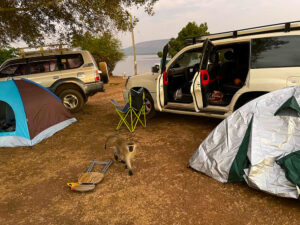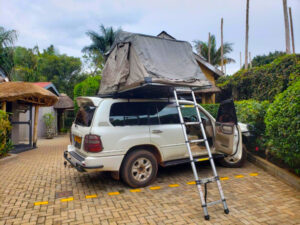Congo Self-drive Photography Tips: Self Driving African Tour in Congo
Mastering self-drive photography tips and tricks before you embark on your unforgettable Congo road trip in Africa is essential as it guarantees you a lifetime experience. There are abundant photographic opportunities to inspire you on Congo’s self-drive road trip tour.

However, achieving a successful photography experience requires adequate preparation and taking note of numerous tips and tricks.
Congo Self-drive Photography Tips
Here we have put together a checklist of Congo self-drive photography tips to guide you on your next road trip;
Take essential photography equipment.
When you think about Congo self-drive road trip, photography is a must. However, embarking on your self-drive photography road trip in Congo when equipped with the right gear should be a way to go. Essential photography equipment to have on your list includes a good camera with a couple of lenses.
If you plan to have great wildlife photography on your Congo self-drive road trip, then consider a camera with at least a 300mm lens. This can save you from any frustration when you carry anything with less than 300mm.
Traveling with two cameras is great too because for you to keep switching the lenses can be time consuming. In the process of switching lenses, there is a lot that you miss. In addition, dust can get into the sensors when lenses change and often it shows up as spots on your photos. On a self-drive photography road trip in Congo do not forget to come along with a flash, especially for night photography sessions.
Storage
Photography is a must-do on any kind of Congo safari. But what often disappoints many travelers is the limited space of their camera memory. This can be solved by you getting along with extra memory cards. The additional memory cards can serve as extra space thus allowing to proceed with photography sessions when the camera you are using runs out of storage.
Settings
Generally, wildlife photography doesn’t have the best or correct settings. The best though is to make the best use of the basics of photography and fully understand the link between aperture and shutter speed. By so doing, you can be in a position to freeze action and avoid camera shake. You can also be in a position to manipulate the depth of field.
Angles and perspective
When on self-drive wildlife photography in Congo, often, it is tempting to zoom in as close as possible and take a close-up shot. However, this can cause a bunch of very usable field guide pictures. The best is to try switch the angles and perspectives. Capturing an animals in a bigger setting often tells more stories.
Dealing with the light
During photography, light is essential. You can time your photography sessions and preferably, early morning and late afternoon provide the most stunning lighting with the sun low in the sky. The overcast weather works like a huge softbox, providing workable light conditions to photograph throughout the day.
Focus on the eyes
At the moment when you are taking pictures, there are specific parts of the animal you should focus on and including the eyes. The best is for you to position yourself such that you capture the right parts of the body you are interested in.
Be patient
A good photographer must be patient enough. Patience is essential when it comes to photography whether it is during wildlife or landscape photography. When you spend more time, you can be in a position to capture the best insights of whatever you intend to take pictures of. The focus should be taking pictures of wildlife when they are in action or interacting. To have the best of such engaging moments of wildlife, you should be patient enough.
Do not leave out the small stuff.
Often, photographers tend to leave out small mammals or features and focus on the huge mammals on their self-drive tour or any safari. This can be mountain gorillas or lowland gorillas as they are immersed in the wild. However, capturing a picture of a dung beetle/colorful bird in flight can be more evocative than a sleeping lion. Small features can be best captured on a walking tour.
Stay safe
Regardless of the self-drive destination you can be in Congo, safety is essential. Do not always be carried away and forget about a life after a photo captured. When taking pictures of wildlife, remember these are wild creatures and they are generally unpredictable.
Respect the wildlife
Avoid as much as you can harassing animals in order to take a better photo. Photographers and other visitors should remain as observers and avoid creating a negative impact on the lives of wild creatures. Do not be tempted to whistle as a way to wake up an animal such that you capture its best picture. This can interfere with its moment and is generally unethical behavior.
Position your vehicle
In your 4×4 self-drive car, try as much as you to position your ride well such that you capture great spots of wildlife or other features of interest. You can also seek guidance from others on how to take pictures on a safari. You can ask your colleagues or a guide and when at the sightings, ensure that the car engine is turned off.
Carry a pair of binoculars.
A pair of binoculars is essential, especially where you want to get up close and personal with most wildlife. Binoculars are also special when it comes to bird watching.
Carry a daypack & other essentials.
A waterproof daypack is essential for you to pack safely your items including a camera. Aside from taking a daypack, you also need to bring other items including hand sanitizer, sunscreen, wet wipes, additional camera batteries, memory cards, USB chargers, insect repellents, a first aid kit, and others.
Composition
Photography requires some unique technical skills. How you compose yourself can earn you great pictures. You can do early practice to make yourself acquainted to techniques that can guarantee you great image capture in the wild. One most important practices of a good photographer is to look at the framing first and all other edges before you click the shutter.


